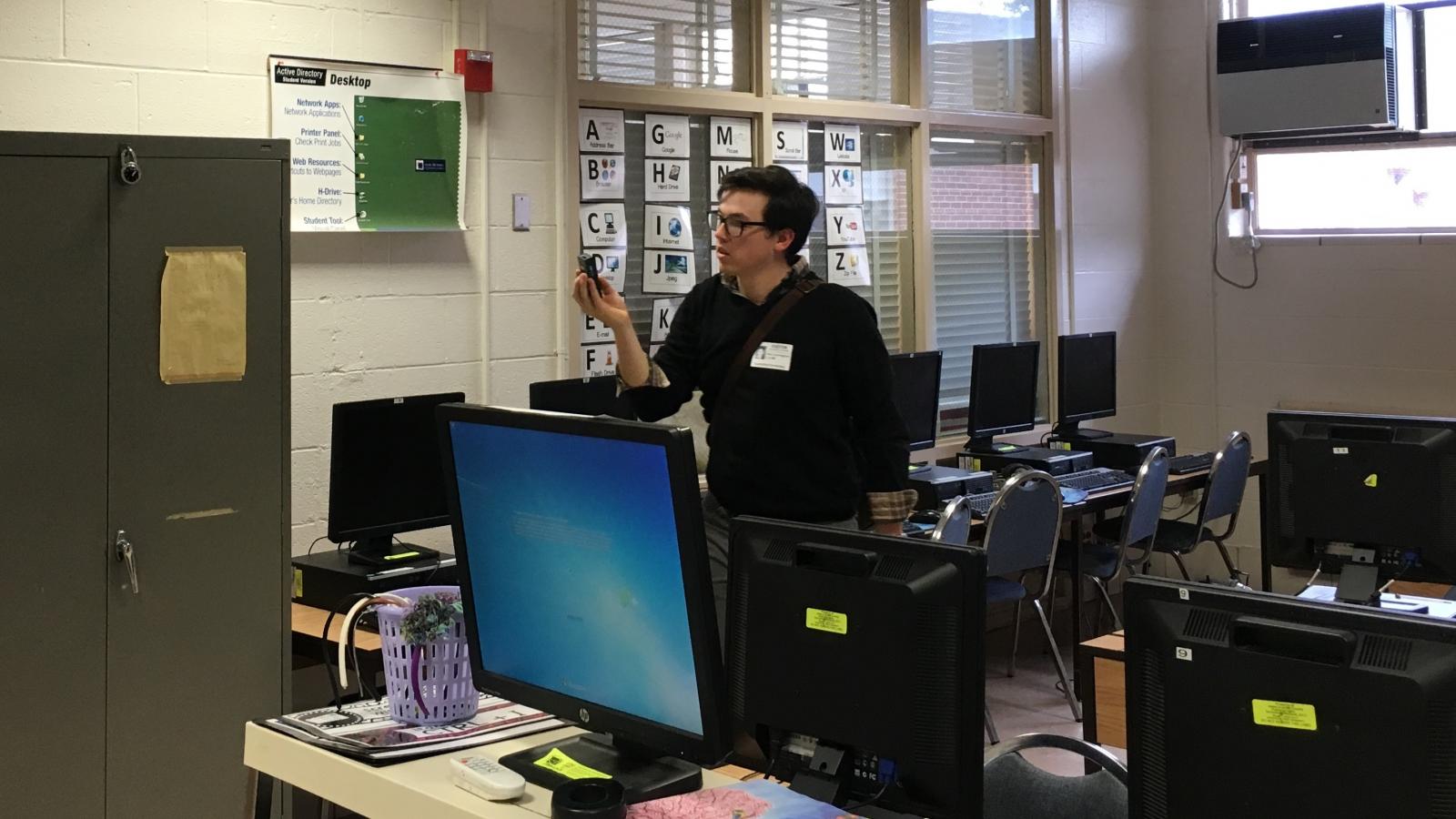The concept of "retrofitting" buildings—making modifications to an existing structure to increase sustainability while reducing energy consumption and cost—is a practice that has gained significant traction within design/build disciplines and community stakeholders over the past decade in response to climate change, rising construction cost and an increased desire for energy conservation. Most experts in design policy agree that a substantial portion of professional work undertaken by today's graduates will be retrofitting buildings to foster a sustainable built environment and improve the health of those who inhabit it.
This spring, the University of Maryland’s architecture program launched a new course that tackles this issue head on, providing on-the-job learning through practice for a real client. Using cutting-edge technology, graduate and undergraduate architecture students worked with Anne Arundel County to provide the life cycle assessment of one of their elementary schools, the first in an on-going partnership to help the county provide energy-efficient, “healthy” buildings for its youngest residents.
The project is part of ARCH 688 Net Zero, Net Impact Building Design, taught by Assistant Professor of Architecture Ming Hu, whose extensive research and practice on environmental assessments caught the county’s eye last fall at a conference. The county was in the process of evaluating their school buildings—something they must undertake every 10 years—to determine which buildings were ripe for renovation, or in some cases, demolition and new construction. While schools are traditionally evaluated by their physical condition, the county has been unable to gauge other critical assessments that affect quality of life, such as air quality, noise and temperature.
“While the county doesn’t have the capacity and expertise to do this on their own, they recognize the importance these factors have on both the life of the building and the wellbeing of those who use it,” said Ming. “For the students, it’s an excellent opportunity to learn new technologies that they will use later in practice, and to garner a greater understanding of a growing industry.”
Focusing on one of the county’s older elementary schools, the students analyzed several indicators, including air quality, acoustics, energy efficiency and carbon footprint. Using a mix of software platforms, they leveraged the data collected from these assessments to perform quantitative and qualitative analyses of the current conditions. Next, they built digital models of the buildings and created life cycle assessments to understand the potential environmental impacts, such as global warming potential, ozone depletion, acidification and smog correlation. Once the building’s current condition was visualized, the students broke into groups to examine different retrofit strategies, such as building envelope and human comfort. Each team created scenarios that tested and analyzed specific improvements, and also examined the impact of using specific materials. One of the more surprising aspects for students was that replacing older materials—like brick and stone—with more modern façade materials may not always be the best strategy; retrofitting preserves the embodied energy of the existing building and reduces the environmental impact of extracting, producing and transporting newer building materials.
The student’s research and analysis will be essential in assisting Anne Arundel school administrators and planners as they determine the destiny of county school buildings. The exercise also raised important questions, such as how to optimize conditions for the comfort and health of different populations; in this case, children. Certain aspects—like heating and cooling—can have different impacts on different groups, spurring the county to look deeper at how the students feel.
“An issue with these types of analysis is that you can really only poll adults,” said Malik Johnson-Williams, who is pursuing a graduate degree in architecture and urban design. “But at an elementary school, 90% of the occupants are under 18. I think our study encouraged Anne Arundel County to survey the students about how they view the space. If you look at the research, little children are always hot; they produce so much more energy. They have a very different feeling of the space than adults.”
Ming is continuing assessments for the county over the summer—this time for a different building. While many studio projects focus on the design of new buildings, Ming feels her class provides the valuable skills needed to undertake retrofit design and an understanding of its place in the future of our built environment.
“It was definitely one of my favorite classes and it’s very unique,” said Malik. “The class offers a different way of looking at design; a lot of our coursework and sadly, practice, assert these proclamations that are based on assumptions, and that don’t take into account the real analytical research. This class has taught me to re-think my approach; that design should be informed by true data and research because that’s where quality design can be made.”
In situations with strained budgets and an abundance of aging buildings, retrofitting is a viable option that Ming and her students hope others will give a second look. In Anne Arundel County, the theory that retrofitting is the way to go now has the data to back it up.
“For us, it’s clear, but again, it’s up to the policymakers,” adds Ming. “I think a lot of people have misconceptions about new buildings and automatically assume they would be the higher performers.”

